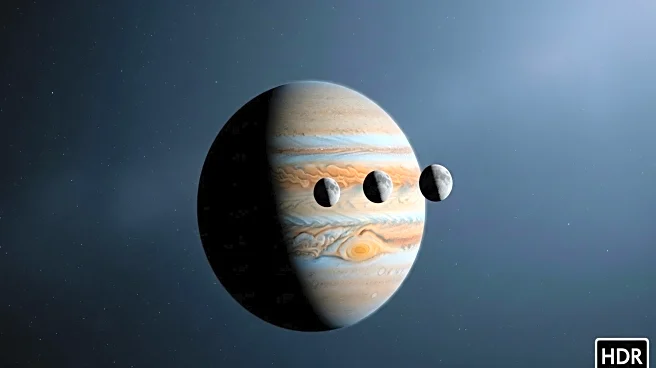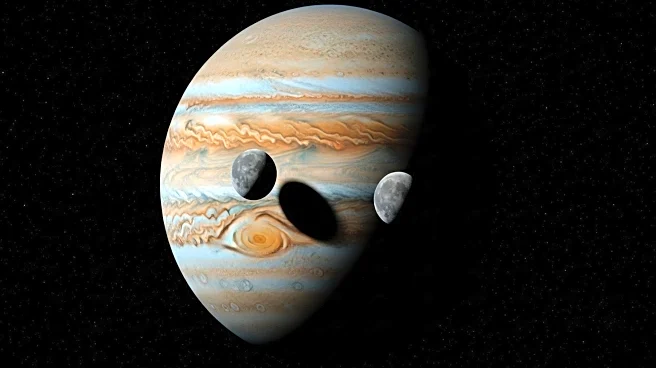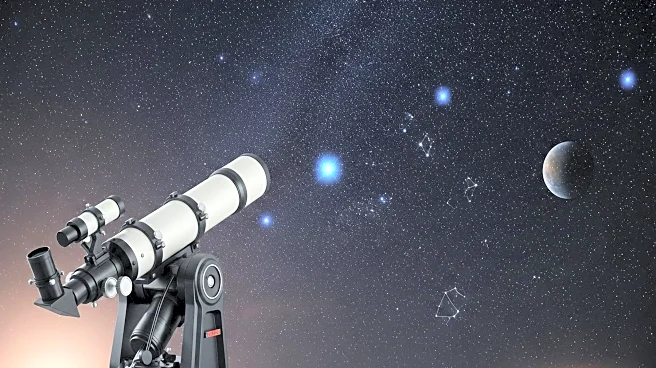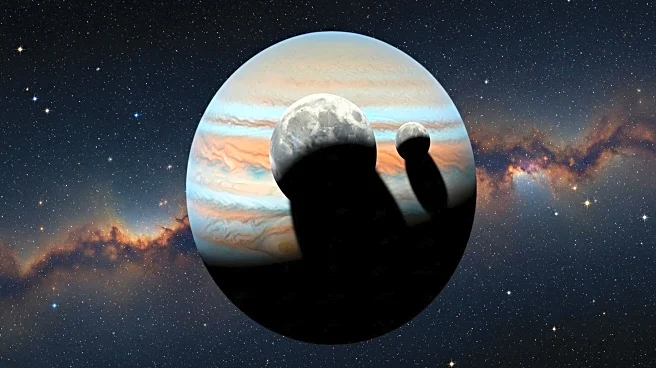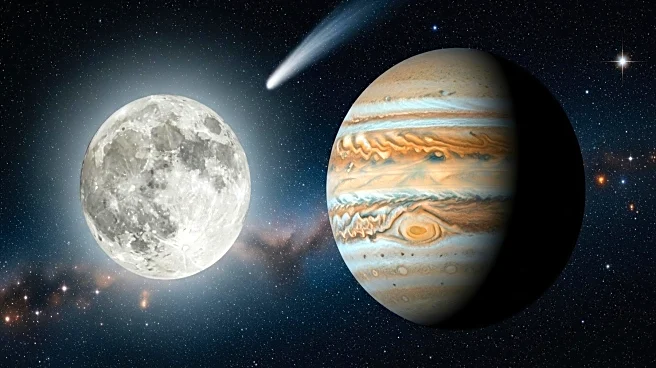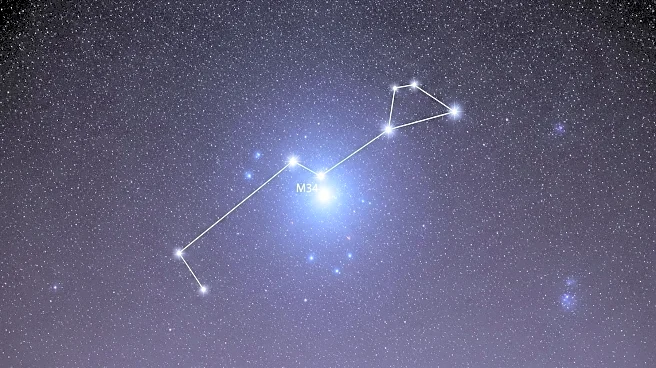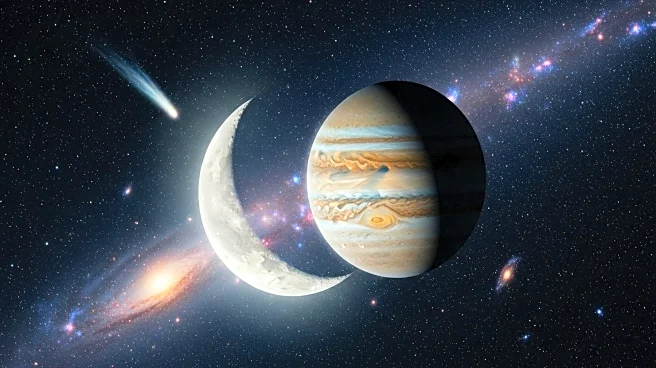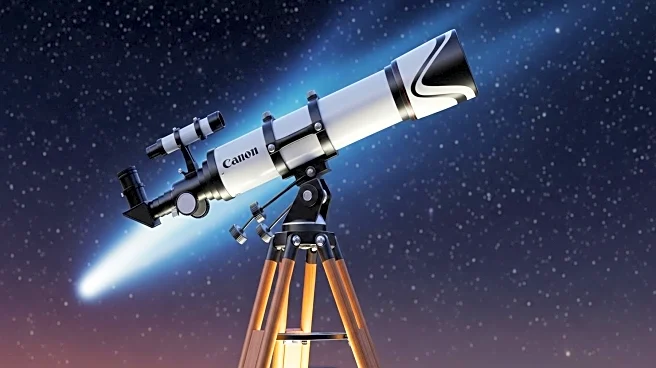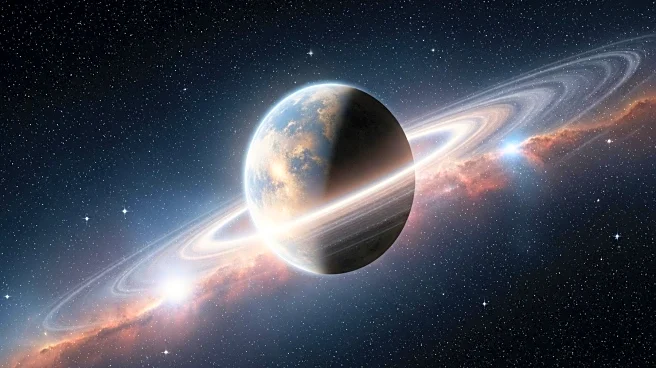What's Happening?
Astronomers are focusing on the Saturn Nebula (NGC 7009) as a key observational target on October 11, 2025. This nebula, located in western Aquarius, is best viewed around 8 to 9 P.M. local daylight time, benefiting from dark skies before the moonrise. The Saturn Nebula is a planetary nebula, formed from the material ejected by a dying star, which shines at magnitude 11.5. The nebula itself glows at 8th magnitude and is relatively easy to observe through a telescope. It features a spherical bubble and two projections, known as ansae, which give it a Saturn-like appearance. This celestial event coincides with the transit of Io and Europa across Jupiter, providing additional observational opportunities.
Why It's Important?
The observation of the Saturn Nebula offers astronomers and enthusiasts a chance to study the life cycle of stars and the formation of planetary nebulae. These observations contribute to the understanding of stellar evolution and the processes that lead to the creation of nebulae. The Saturn Nebula's unique appearance and its visibility during dark skies make it an attractive target for both amateur and professional astronomers. This event highlights the importance of timing and conditions in astronomical observations, allowing for clearer and more detailed views of distant celestial objects.
What's Next?
Astronomers and sky watchers may continue to monitor the Saturn Nebula and other celestial events throughout the week, including the transit of Io and Europa across Jupiter. These observations can provide further insights into the dynamics of planetary systems and the behavior of celestial bodies. As the moon phase changes, viewing conditions may vary, affecting the visibility of the nebula and other astronomical phenomena.
Beyond the Headlines
The study of planetary nebulae like the Saturn Nebula can offer deeper insights into the chemical composition of ejected stellar material and the interactions between dying stars and their surrounding environments. These observations can also inform models of stellar death and the eventual fate of stars similar to our sun.

